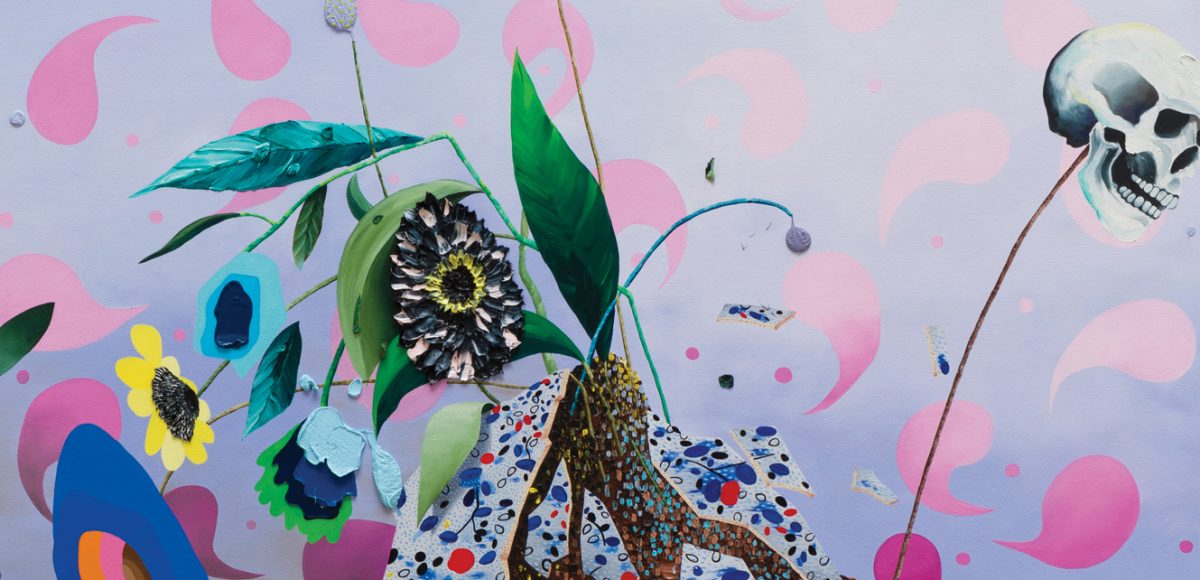Craig Kucia: unnatural disasters
Ibid Gallery, Los Angeles
November 17—December 15, 2018
Craig Kucia’s paintings on canvas and paper provide a crash course in 20th century art history – each one of them. They contain accumulated techniques and stylistic denominators referencing and recombining, in various ratios, Guston, Braque, Matisse, Magritte, Pollock, de Chirico, Pattern & Decoration, Photoshop and sampled popular culture. But this is not simple appropriation; Kucia’s imagery is original to himself, in both autobiographical and more broadly cultural contexts. Kucia’s eccentric palette, textile-like pattern fields, frequent use of impasto in both purely optical and depictive metonymic instances, and knack for making personal talismans out of familiar things, all combine to produce a universe of wit and pleasure.
Certain motifs – trompe-l’oeil sheets of paper taped to walls, lit cigarettes, floral wallpaper – recur throughout the images. A few of the paintings are sparse and explore single ideas; several of the most impressive contain compendia like indices, determining allegories for the artist’s individual and archetypal experience. For example, in “skull sculpture” (2015) a pedestal made of Pollock drips undergirds a stack of skulls in a procession of styles and references – classical, calavera, Cubist, contemporary and a coconut. In the masterful “in the absence of bad news we were like bats” (2018), we finally see the artist’s face, or at least half of it. His brain is a painting dangling from a wire hanger, his right hand balances a stack of nine dead songbirds, each one a different combination of color and technique. A piece of blank paper taped to the wall, a pet cat whose head is a clock, a tree branch growing through the table, and other elements of motifs seen across the show populate this space. Kucia’s shirt pocket is full of pens and paintbrushes. It’s all operatic yet straightforward, fraught yet frank, endearing and strange. Only the toilet paper is a mystery.










